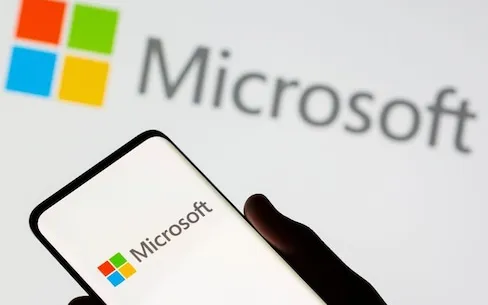Brands Unhappy With Microsoft and Google’s Plan To Experiment With AI-Powered Search Ads
According to ad buyers who spoke to Reuters, Google and Microsoft are incorporating advertisements into their AI experiments without offering the choice to opt out, a strategy that has already irritated certain brands and may result in additional resistance from the industry.
Two tech giants are racing to revamp their search engines with artificial intelligence that can generate written answers to open-ended queries. This process is changing the way advertisers reach consumers through ads that appear in search results. The research company MAGNA estimates that the market will grow by 10 percent to 286 billion dollars this year.
Microsoft is testing ads on its Bing AI chatbot, which began rolling out to users in February, by moving some traditional search ads and adding them to AI responses, the company said.
In an interview in May, Jerry Dischler, Google’s head of ads, said the tech company is using existing search ads to experiment with ad placement in AI search snapshots, an early test called Search Generative Experience that became available last month. . Google said advertisers currently cannot opt out of the test.
Both companies said they are in the early stages of testing ads with generative AI features and are actively working with advertisers and soliciting their feedback.
Some advertisers are wary of spending their marketing budgets on features that are available to a limited number of users, ad buyers said. Advertisers also generally want to control where their ads appear online, and are wary of appearing next to inappropriate or inappropriate content.
Microsoft and Google said their search engines’ existing guardrails, including lists of blocked keywords that prevent ads from appearing on those queries, also apply to their AI search capabilities.
Both companies have invested billions in generative AI, making the technology critical to monetization. This has included investments in other AI companies, such as Microsoft’s multibillion-dollar bet on OpenAI, creator of the popular ChatGPT, and Google’s $400 million stake in Anthropic, an OpenAI competitor.
‘FLIGHT RECORDER’
Testing new ad placements without brands’ consent is a troubling practice for advertisers, said Jason Lee, vice president of brand safety at Horizon Media, a media agency that has worked with insurer GEICO and Corona beer, among others. Another ad buyer for a major advertising agency also said the practice was not considered standard in the industry.
According to an ad buyer familiar with the matter, several major advertisers temporarily pulled their ad spend from Microsoft in response. Among them, Wells Fargo continues to keep some of its advertising budget outside of Microsoft, the person added.
Wells Fargo did not respond to a request for comment.
Lynne Kjolso, Microsoft’s vice president of global partners and retail media, said in an interview that the company’s goal was to make the rollout of the new Bing ad formats as “seamless” as possible for advertisers without creating additional work for them.
Microsoft recently launched hotel ads on its Bing chatbot and is working to bring ads to other industries, such as real estate, he said.
Advertiser concerns are also adding to the tension as technology platforms increasingly offer AI solutions that can deliver better results for advertisers but require them to relinquish control over their ads.
“This is not the first time that Google and Bing have expanded their networks while limiting the control advertisers have,” said Samantha Aiken, controller of paid search at marketing agency Code3.
For example, many in the industry view Google’s Performance Max, a tool that uses artificial intelligence to automatically find the best ad placements across multiple Google products instead of requiring an advertiser to create different ad campaigns, as an analytical “black box,” he said. , because algorithmic models don’t reveal how it determines where ads are shown.
Three ad buyers said they were concerned about Microsoft’s lack of transparency reporting, or reports that could show which search terms caused a brand’s ads to appear in generative AI experiences or how the ads performed compared to traditional search ads.
While Microsoft representatives have addressed the concerns, they have not given a timeline for when more transparency reporting would be available, two ad buyers said.
“Advertisers can’t just go in and pull up a report to see how often they’re showing up (on the Bing chatbot),” said one of the ad buyers, who requested anonymity to discuss private conversations with a business partner.
Kjolso said transparency reports have been a top request from advertising agencies and that Microsoft’s product teams “worked on that primarily.”
“We’re definitely thinking about what additional tools and controls we need to be able to provide to advertisers,” he said, adding that sales teams were actively working with some brands to remove concerns about where their ads would appear.
Two media buyers at major advertising agencies said there were questions about how the search giants could prevent ads from appearing in AI responses that contain “hallucinations” or false information.
Bing’s Web data can act as a “grounding mechanism” for large-language models and actually reduce the risk of hallucinations, Kjolso said.




